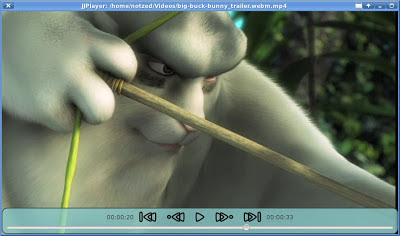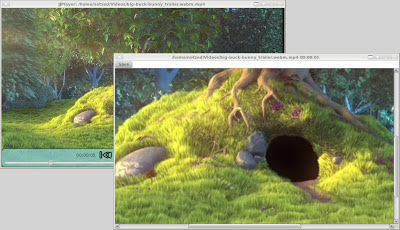More video player work
Mucked around with a few things in JJPlayer last night and this morning. Nothing on TV last night and I just wanted a couple of hours today.
- Tried a much more aggressive fallback mode for frame skipping - it starts to drop decoding of frames as well.
I'm not sure how useful it is if the cpu is just too slow - it eventually turns the video into a irregular slideshow, but can let the sound play fairly smoothly if there's enough time left. So maybe it has some use.
- I noticed the "get audio location" isn't very reliable in Android (at least), so I changed the way it syncs to audio. I think get audio location is just reporting the head of the last buffer submitted to the sound device or something similar, so it jumps around compared to the actual time. So now it only re-sync's if it gets well out of whack. It seems to remove some annoying frame rate jitter, but as i'm playing back 50Hz material on 60Hz it's still pretty jittery.
- I only allocate 3xtextures in the GLES backend if I don't need them to buffer. Less memory usage.
- Moved some more functionality into the MediaReader class where it has the proper non-asynchronous state from which to make accurate decisions.
- Added a full-screen mode in JavaFX (F11).
- Bound the image size to the window size so it sizes to fit, maintaining aspect ration. Still assumes square pixels.
- Added keyboard controls in JavaFX. Space to pause/unpause, left/right to skip back/forward 30s, page up/down for start/end of file, escape exits full-screen mode or quits, and the afore-mentioned F11 for full-screen mode.
- Changed to SVG icons in JavaFX, and even if they're a bit ugly they're consistent. Converting Inkscape SVG to code is a bit of a pain so it's a bunch of hard-coded stuff plus the curved triangle thing.
- Did some styling to make the buttons flat/borderless, they pre-light.
- Fixed some other seek related stuff in JavaFX frontend. It's better but still not perfect. Pause/resume still messes things up sometimes.
The new buttons and styling.
There were a few annoying things along the way. The keyboard input was a bit of a pain to get working, I had to override Slider.requestFocus() so it wouldn't grab keyboard focus when used via the mouse (despite not being in the focus traversal), and I added a 'glass-pane' over the top of the window to grab all keyboard events. I had to remove all buttosn from the focus traversal group and only put the 'glass-pane' in it. I made the glass-pane mouse-transparent so the buttons still work.
Another strange thing was full-screen mode. Although JavaFX captures ESC to turn it off, the ESC key event still ends up coming through to my keyboard handler. i.e. I have to track the fullscreen state separately and quit only if it's pressed twice.
Next to fix is those a/v sync issues ...
Update Well instead I added a frame capture function. Hit print-screen and it captures the currently displayed frame (raw RGB) and opens a pannable/zoomable image viewer. From here the image can be saved to a file.
Although I haven't implemented it, one could imagine adding options to automatically annotate it in various ways - timestamp, filename, and so on.
Update 2: I subsequently discovered "accelerators", so i've changed the code to use those instead of the 'glass pane' approach - a ton of pointless anonymous inner Runnables, but it feels less like a hack.
scene.getAccelerators().put(new KeyCombination(...), ...);
Update 3: I tried it on my laptop which is a bit dated and runs 32-bit fedora with a shitty Intel onboard GPU (i.e. worthless). It runs, but it's pretty inefficient - 2-4x higher load than mplayer on same source. Partly due to Java2D pipeline I guess but it's probably all the excess frame copying and memory usage. I tried to do some profiling on the workstation but didn't have much luck. Just seems to be spending most of it's time in Gtk_MainLoop, although the profiler doesn't seem to know how to sort properly either.


